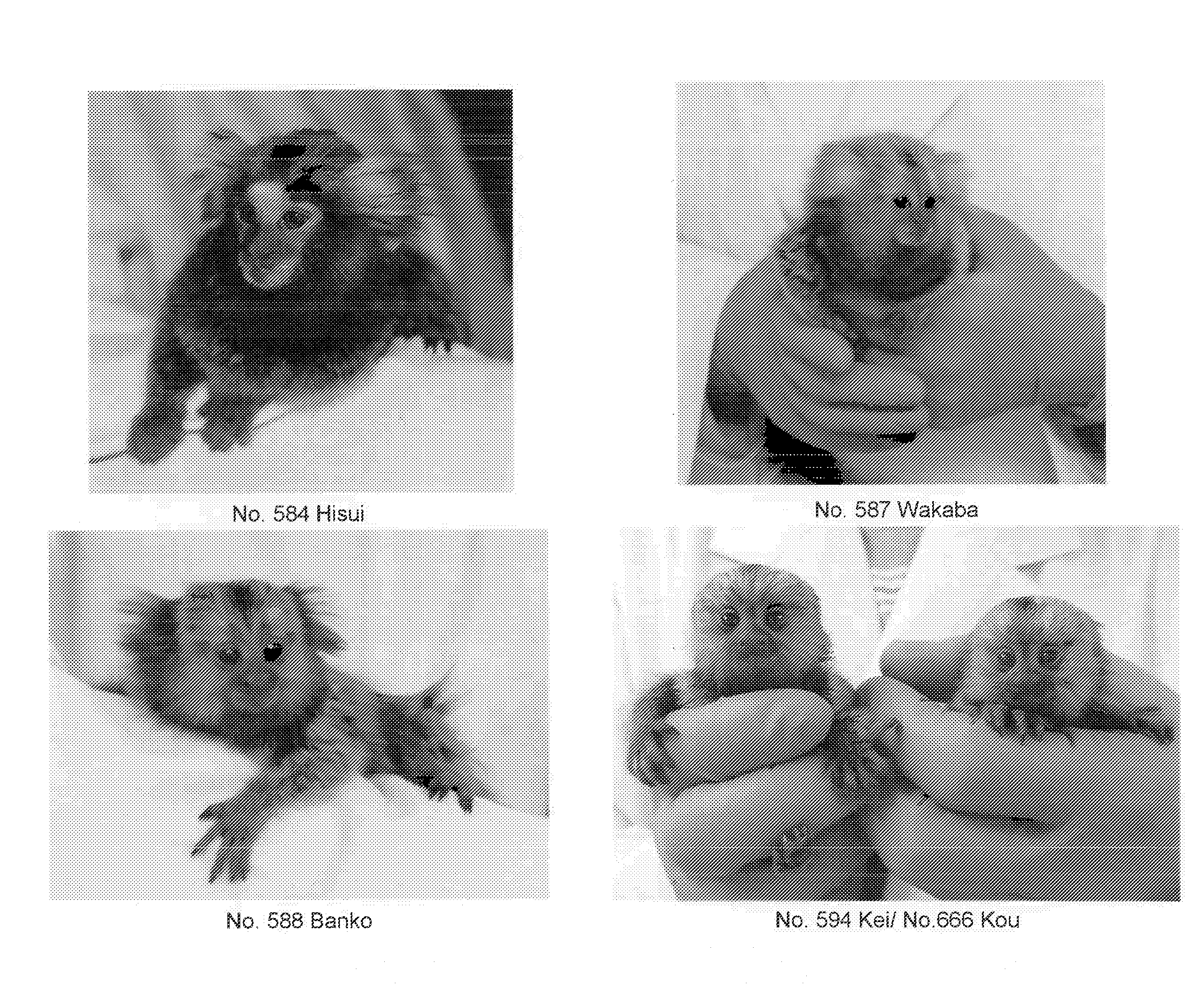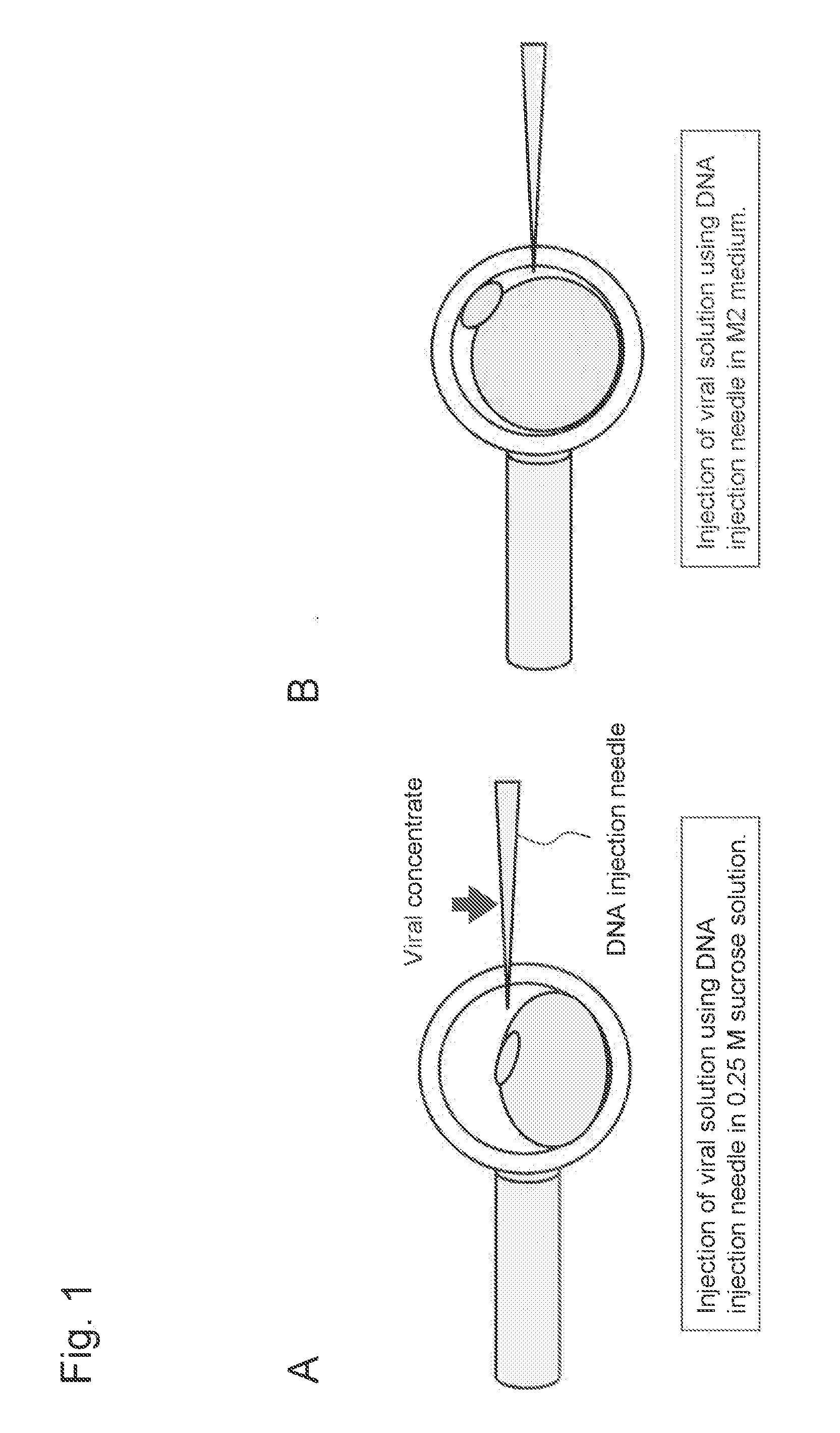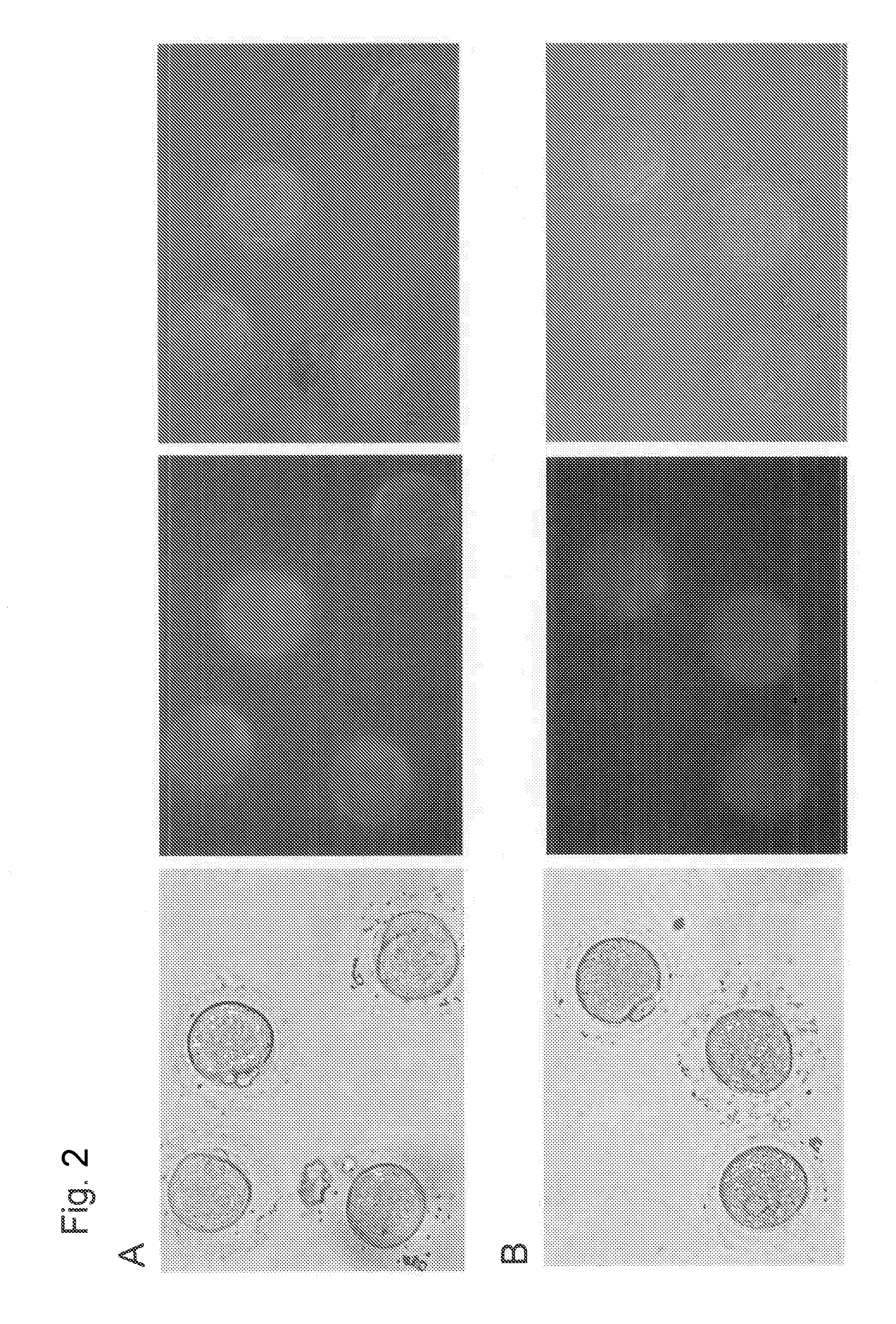Method for introducing foreign gene into early embryo of primate animal and method for producing transgenic primate animal comprising such method
a technology for primate embryos and foreign genes, which is applied in the field of transgenic nonhuman primate animals, can solve the problems of conventionally difficult to increase the efficiency of introducing foreign genes into early embryos of primates, and achieve the effect of high reproductive efficiency and easy handling
- Summary
- Abstract
- Description
- Claims
- Application Information
AI Technical Summary
Benefits of technology
Problems solved by technology
Method used
Image
Examples
example 1
Examination of Ovarian Stimulation Using Hormonal Agent
[0057]Ovarian stimulation of common marmosets was examined as a form of basic research concerning developmental engineering using marmosets.
[0058]A human recombinant follicle stimulating hormone (hFSH) was continuously administered intramuscularly at 50 IU / marmoset to sexually mature female marmosets for 5 days, 10 days, and 11 days. On day 12 after the start of hFSH administration, a human chorionic gonadotropin (hCG) was administered intramuscularly at 75 IU / marmoset. At 21 to 37 hours after hCG administration, follicular oocytes were aspirated by surgical techniques and then oocytes were cultured overnight under 5% CO2 using Waymouth medium (Invitrogen). In vitro maturation (IVM) culture was performed for oocytes and then in vitro fertilization (IVF) was performed. Thus, ovarian stimulation was examined.
[0059]As a result, 5 days, 10 days, and 11 days of FSH administration resulted in the 9.0±5.7, 12.8±6.7, and 14.7±8.1 as the...
example 2
Examination of In Vitro Fertilization
[0062]In vitro fertilization requires the steps of follicular oocyte collection, in vitro oocyte maturation, and in vitro fertilization. Hence, in vitro maturation medium was examined as the first stage of the examination of an in vitro fertilization method. Waymouth medium, which has been reported to be appropriate for monkey oocyte maturation, was compared with IVM medium (Medicult), which is used for human fertility treatment. As a result, the oocyte maturation rate (39.7%) in IVM medium was significantly lower than the maturation rate (61.5%) in Waymouth medium, but the rate of development to blastocysts (22.2%) after in vitro fertilization of oocytes that had matured in IVM medium was significantly higher than that in the case of maturation in Waymouth medium (4.3%).
[0063]The above results revealed that it would be better to cause maturation of embryos to be subjected to in vitro fertilization in IVM medium and then to implant them into uter...
example 3
Examination of Conditions for Implantation of Common Marmoset Early Embryo into Surrogate Uterus
[0064]Fertilized eggs (257) obtained by in vitro fertilization and 49 fertilized eggs obtained by fertilization via natural mating were implanted into uteri and uterine tubes. These fertilized eggs were examined for developmental potency and an implantation method therefor. As a result of implantation of fertilized eggs obtained by in vitro fertilization, 3 offspring were obtained and the birth rate was 1.2%. On the other hand, in the case of implantation of fertilized eggs obtained via natural mating, 9 offspring were obtained and the birth rate was 18.4%. The birth rate in the case of eggs obtained via natural mating was significantly high (P<0.01). Furthermore, implantation sites of fertilized eggs including uterine tubes (n=140) and uteri (n=166) were compared in terms of birth rate. As a result, the birth rate in the case of implantation into uterine tubes was found to be 2.1% and th...
PUM
| Property | Measurement | Unit |
|---|---|---|
| pH | aaaaa | aaaaa |
| temperature | aaaaa | aaaaa |
| temperature | aaaaa | aaaaa |
Abstract
Description
Claims
Application Information
 Login to View More
Login to View More - R&D
- Intellectual Property
- Life Sciences
- Materials
- Tech Scout
- Unparalleled Data Quality
- Higher Quality Content
- 60% Fewer Hallucinations
Browse by: Latest US Patents, China's latest patents, Technical Efficacy Thesaurus, Application Domain, Technology Topic, Popular Technical Reports.
© 2025 PatSnap. All rights reserved.Legal|Privacy policy|Modern Slavery Act Transparency Statement|Sitemap|About US| Contact US: help@patsnap.com



